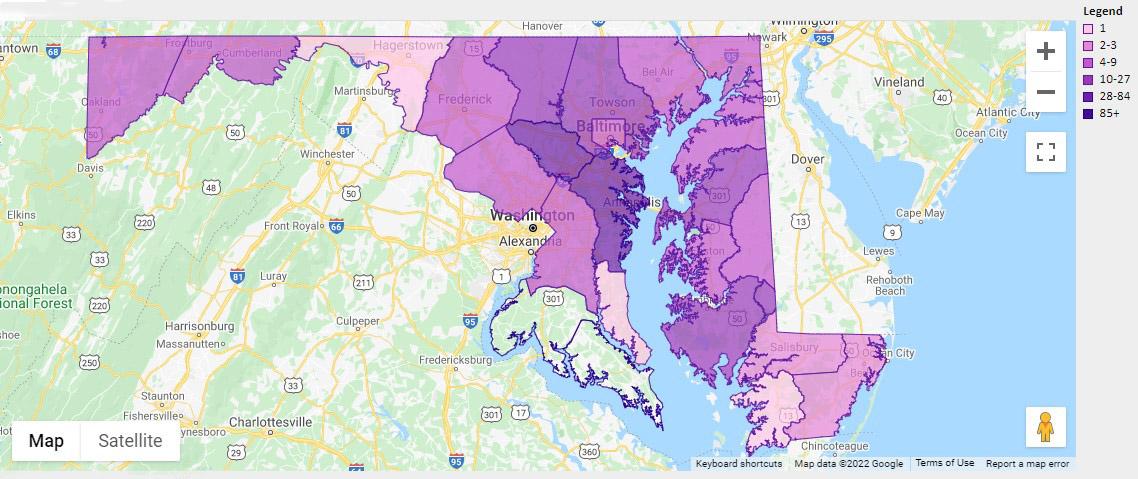In keeping with the existence of multiple names for invasive plant species, in this article we look at Cirsium arvense, which many observers may know as “Canada Thistle.” It is also known as creeping thistle, as well as green or perennial thistle, depending on the source. Others express their opinion about it by calling it hard thistle and cursed thistle. Regardless of the name, Canada thistle is not only not native to Canada or North America but to Europe and Asia. It has been introduced to many other regions of the world, including South America, New Zealand, Australia and Ireland. In the United States, it is found throughout the northern and southwestern states. In the mid-Atlantic region, it is widespread in Pennsylvania, Delaware and West Virginia. It is found mostly along the Blue Ridge and in the northern counties in Virginia. Distribution in Maryland is another matter. For this series, we often share distribution maps from EddMapS from the Center for Invasive Species and Ecosystem Health at the University of Georgia (also the host of invasive.org and bugwood.org). However, their Canada thistle map is at odds with the one from the Maryland Biodiversity Project (below; click here for full-size map and select the “County Map” tab) shows a much wider spread of the plant.

What is it?
Canada thistle is an aggressive and colonial perennial, with both male and female plants. It is considered a noxious weed in Maryland and many other areas across the U.S. It is most often found in disturbed areas, such as roadsides or agricultural lands that have been abandoned or that are being converted to woodland through early successional stages. It can also be found on the edges of wetland habitats as well, such as stream banks, where it can present a significant problem in riparian habitats. It requires full sun, and can thrive in lawns, landscapes, and rights-of-ways, where it can out-compete native species by overtopping them to block sunlight and by sinking deep tap roots to monopolize water sources.
How does it spread?
Unlike other thistles that spread mainly by seed every year, Canada thistle can spread through its extensive root system, that grows both vertically and horizontally through the soil. This extensive root system leads to colonies of plants in distinct patches. In Maryland, seed production runs mid-May to June; each plant can generate up to 1,500 seeds that are primarily spread by the wind.
How can I identify it?
Immature Canada thistles emerge as a rosette and rapidly grow to up to 6 feet tall on slender shoots. Unlike many thistles, the long, narrow leaves are not especially prickly. The female plants produce multiple bright purple flowers that turn white as the seeds mature. Patches of Canada thistles that are producing their downy seeds can give the appearance of a snowstorm in a strong wind.
See the photo gallery below.
How can I control it?
Any treatment of Canada thistle will require repeated attention for several years, as seeds can remain viable in the soil for up to 20 years. Mowing is an effective treatment but needs to occur several times throughout the growing season to ensure that plants do not mature. Herbicide treatments have provided mixed results, especially in areas that are already colonized by Canada thistle. The best control seems to be vigilance, especially in areas where property owners are managing for early successional habitats for wildlife or are planting seedlings for woodland restoration. Early action to remove young plants will reduce the likelihood of colonization.
For more information:
Learn more about Canada thistle:
Worst Weed in Maryland? - Maryland Invasive Species Council
Canada Thistle - iNaturalist
